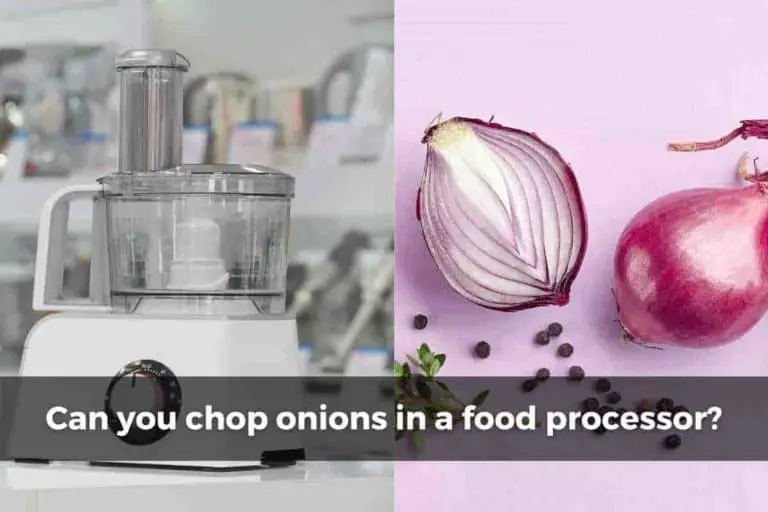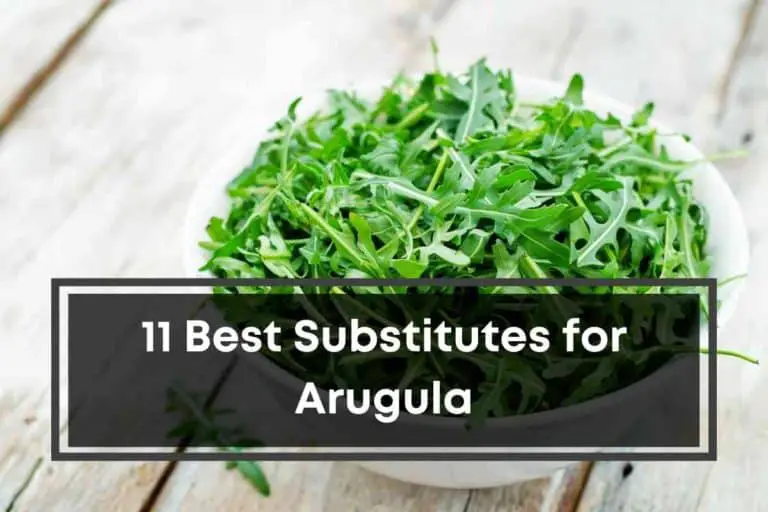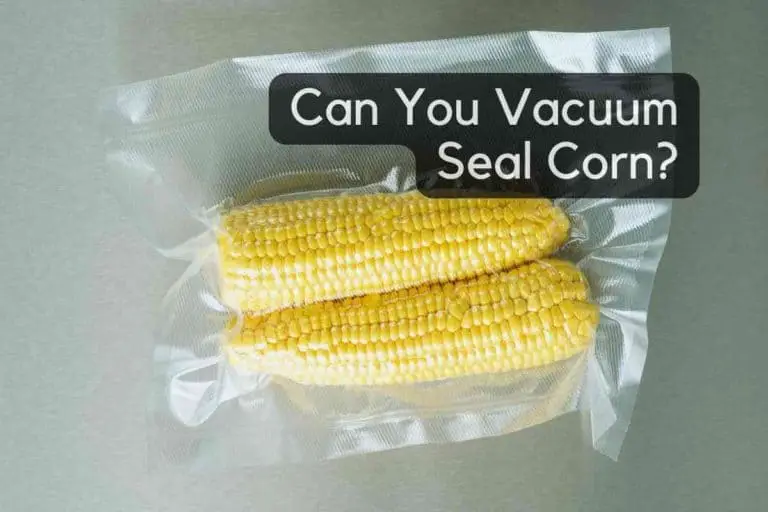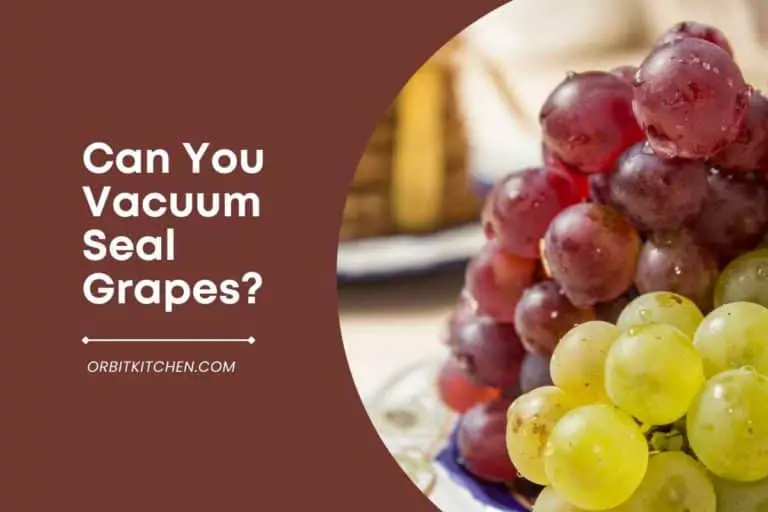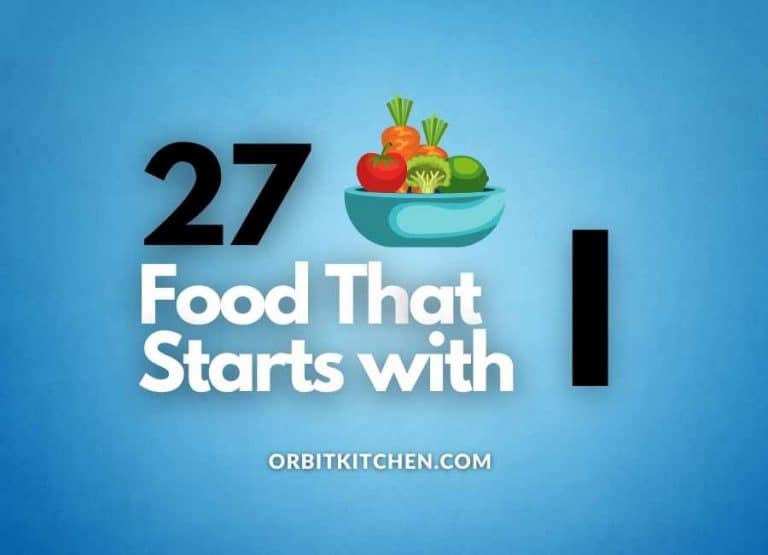Are Potatoes Fruits or Vegetables?
The potato is an excellent, versatile, and nutritional food that is eaten almost everywhere worldwide. These are considered starchy foods, like pasta, rice, or bread, so it is an interesting issue to discuss among nutritionists and dietitians whether the potato is a fruit or vegetable and how much we should consume each day.
Are Potatoes Fruits or Vegetables?
Potatoes belong to a family of vegetables that grows from an annual edible root and are botanically proven to be vegetables. They are also known as starchy tubers, are usually eaten in meals, and are excellent sources of carbohydrates.
Furthermore, potatoes are the sole ingredient in all savory dishes, whether they contain protein. Therefore, People eat a considerable amount of these starchy vegetables in their meals and get good results.
In this guide, we’ll explore the topic of are potatoes vegetables, or fruit in detail.
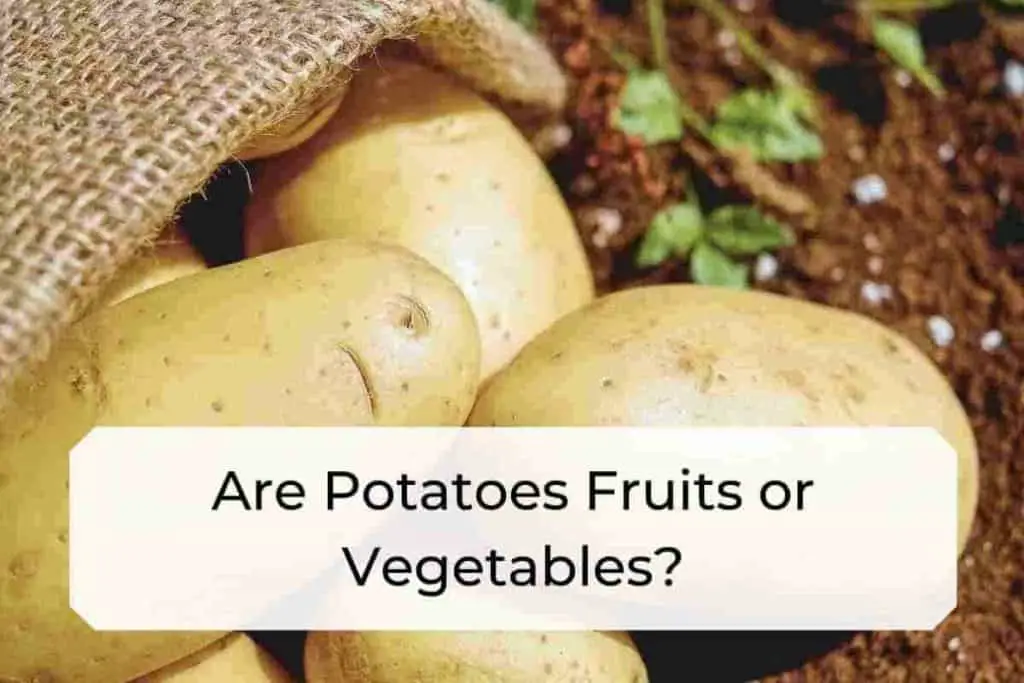
What Are Vegetables and Fruits: What’s the Difference
The plant’s fruit develops from the flower, while the other parts, including the stem and root, can be classified as vegetables. Therefore, fruits and vegetables can be classified based on where they come out. All seedy plants, including apples, carrots, and tomatoes, are fruits, and carrots, ginger, beets, are vegetables in such conditions.
How to Define Fruits?
Fruits, in botanical terms, are the mature, fleshy, ripening fruit of a flowering plant with the content of the fruit, including the seeds or seeds. Technically, grapes, apricots, bananas, corn, tomatoes, almonds, and acorns are fruits.
How to Define Vegetables?
In botanical terms, a vegetable refers to any portion of a plant consumed as food, including roots, tubers, bulbs, flowers, or stems. Actual vegetables are some portions of annual herbaceous plants eaten raw or cooked during the main course to complement starchy foods and other foods.
What Food Group Is the Potato In?
The potato belongs to the carbohydrate food group, one of the three main macronutrient groups in our diet. Traditionally, you placed potatoes in the subgroup of starchy vegetables in the old food pyramid, but in the new classification, potatoes have been moved to the rightful vegetable group.
Furthermore, potatoes are one of the most convenient types of vegetables that can be used in various recipes, particularly in the fast-food industry. They are also widely spread worldwide due to their enriched carbohydrate content and are used as food staples in the countries where they grow.
However, potatoes are starchy vegetables rich in Vitamin C, but that doesn’t mean that you can eat as much as you want, as excess starch also causes obesity.
Do Potatoes Count as a Vegetable?
Potatoes come from the root of a plant and count as a vegetable. Potatoes are counted in the daily edible vegetable with a good portion of vitamin C, carbohydrates, and starch.
Why Is Potato Not Considered a Fruit?
Potatoes are primarily vegetables and cannot be classified as a fruit. They are root crops or root vegetables that contain large amounts of starch. Although potato plants do produce berries that look like tomatoes and have many seeds, they also produce berries like fruit.
Read Also: What Vegetables Go in Japanese Curry?
Do Fruits and Vegetables Both Have the Same Nutrients?
Although fruits are higher in calories and sugar than vegetables, both vegetables and fruits contain antioxidants, fiber, vitamins, and minerals. However, some specific types of fruits and vegetables include particular nutrients.
Both fruits and vegetables are excellent and essential for a healthy diet. However, in some circumstances, you cannot replace fruits with vegetables. Let us look at the comparison table of nutrients between vegetables and fruits to get more details regarding a healthy diet.
| Nutrient | Fruits | Vegetable |
| Sugar Level | 5-15% | 5% |
| Vitamins | Vitamin C and Potassium | Carotene, Vitamin(C, K, B.Mg)and much more |
| Fiber | Dietary fiber, Pectin | Pectin & dietary fiber soften cooking |
| Starch and protein | Meager amount | Enrich in starch and protein |
Why Is It Important to Know the Potato Food Category?
As a staple food, potatoes are one of the most commonly used vegetables worldwide, making it essential to know the food category. They grow from the plant’s roots inside the ground, so they fall into the vegetable category and are considered to be one of the healthiest vegetables.
Besides potatoes, one must be aware of their nutritional value, which makes them the most commonly used vegetable in all countries. They are rich in starch and carbohydrates; there are many more nutrients in them you must know before their regular use in your diet. Let’s have a look at the baked potato nutrients according to USDA.
| Name | Amount |
| Vitamin C | 28% RDI (Recommended daily intake) |
| Magnesium | 12% RDI |
| Carbohydrates | 36.6 g |
| Potassium | 26% RDI |
| Protein | 4.3 g |
| Fat | 0.2 g |
| Fiber | 3.8 g |
| Calories | 161 |
| Phosphorous | 12% RDI |
| Manganese | 19% RDI |
| Vitamin B6 | 27% RDI |
How Many Types of Potatoes Are There?
Around 200 types of potatoes are sold worldwide, especially in the U.S. Each of them fits into the seven different kinds of potatoes; red, yellow, russet, blue/purple, white, petite, and fingerling. The variety of this vegetable works to keep the brain and body in balance throughout the day.
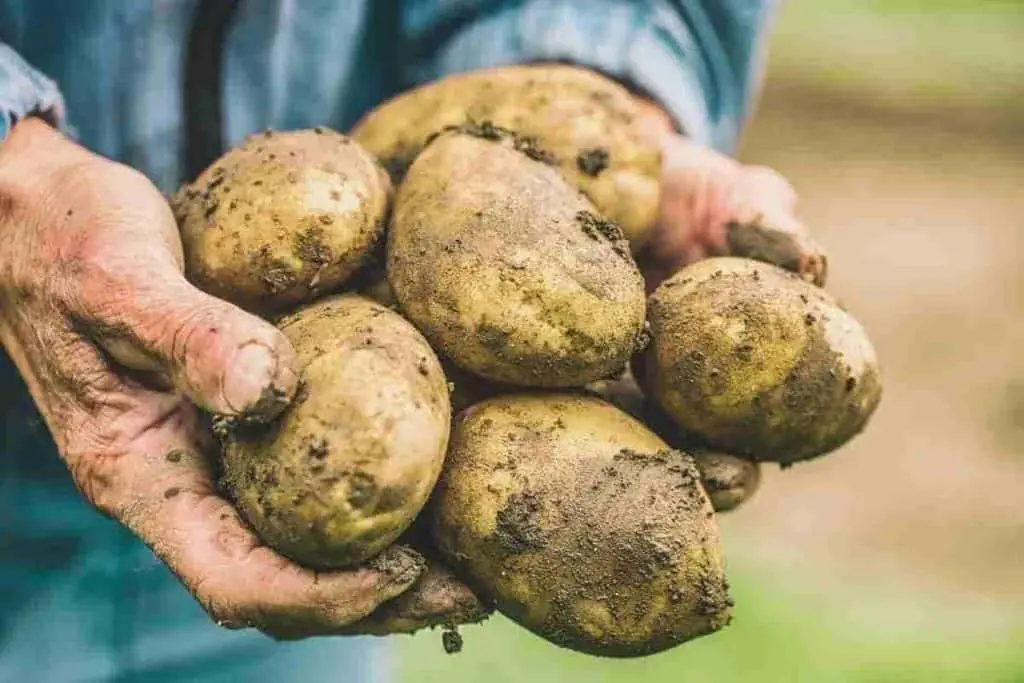
Russet Potato
Russet potatoes are medium to large and oval with brownish netted skin and white to pale yellow flesh. The skin is chewy when cooked, and the color is light, fluffy, and dry when eaten. Due to its medium sugar content, the flavor is slightly earthy. Best to serve as fried or roasted due to its earthy flavor.
Red Potato
Red potatoes are medium-sized, slightly oblong or round, with thin red skin and white flesh. The texture of red potatoes is creamy, moist, and a little waxy, and due to light-medium sugar, its taste is subtly sweet. Best to serve roasted, grilled, steamed, soup or salads.
White Potato
White potatoes are long in shape, tan skin and flesh are white, and their taste is slightly cream due to mild starch. The best thing is they hold their shape after cooking, and their thin skin is perfect for giving velvety texture to mashed potatoes without peeling. Perfect for parmesan garlic dressing and salad after tossing cooked in Caesar.
Yellow Potato
Yellow potatoes are oblong in shape and size, vary from regular to larger, and come in tan, yellow skin, and golden flesh. Their subtly sweet and buttery taste makes them perfect for grilling, baking, roasting, or mashed potatoes. They are enriched in potassium, and carbohydrates and give you instant energy better than a banana.
Purple Potato
Purple potatoes are oblong- to fingerling-shaped, medium in size, with bluish or slightly reddish skins and pink to white flesh. Baking, roasting, or microwaving are the best ways to cook and present the purple color of these potatoes. Their little buttery and slightly nutty flavor make them a complement to a green salad.
Fingerling potato
The fingerling potatoes are oblong or finger-shaped and range from 2 to 4 inches in length. They have a red, orange, or white skin color, and their flesh is yellow to white, though sometimes they seem to have streaks of color. Its nutty, buttery flavor is enhanced when it is roasted or fried, and it is usually served with sauces like ketchup, garlic mayo, and romesco.
Petite Potato
Petite potatoes are generally referred to as marble balls or pearls, and their texture is similar to skin or flesh color, with high sugar content. They are best served roasted; their concentrated flavor and quick cooking make them perfect for salads. It is mainly served during prep time as it is easy to prepare and can be prepared without cutting or slicing.
What Are Sweet Potatoes?
Sweet potatoes are starchy, sweet-tasting root vegetables, usually recognized by their vibrant orange flesh and copper-colored skin. Its hundreds of varieties grow worldwide and display colors like yellow, white, deep purple, reddish-purple, and are among the best sources of carotene, precursor, and vitamin A.
Unlike potatoes, sweet potatoes are the root of the morning glory family that is widely eaten. Sweet potatoes are very healthy and rich in vitamin C, vitamin A, beta-carotene, vitamin B6, fiber, and potassium.
Anthocyanins are more abundant in sweet potatoes with purple flesh. Anthocyanins and beta-carotene are phytochemicals found naturally in plants that control the color of vegetables. A variety of phytochemicals have been researched for their potential health benefits.
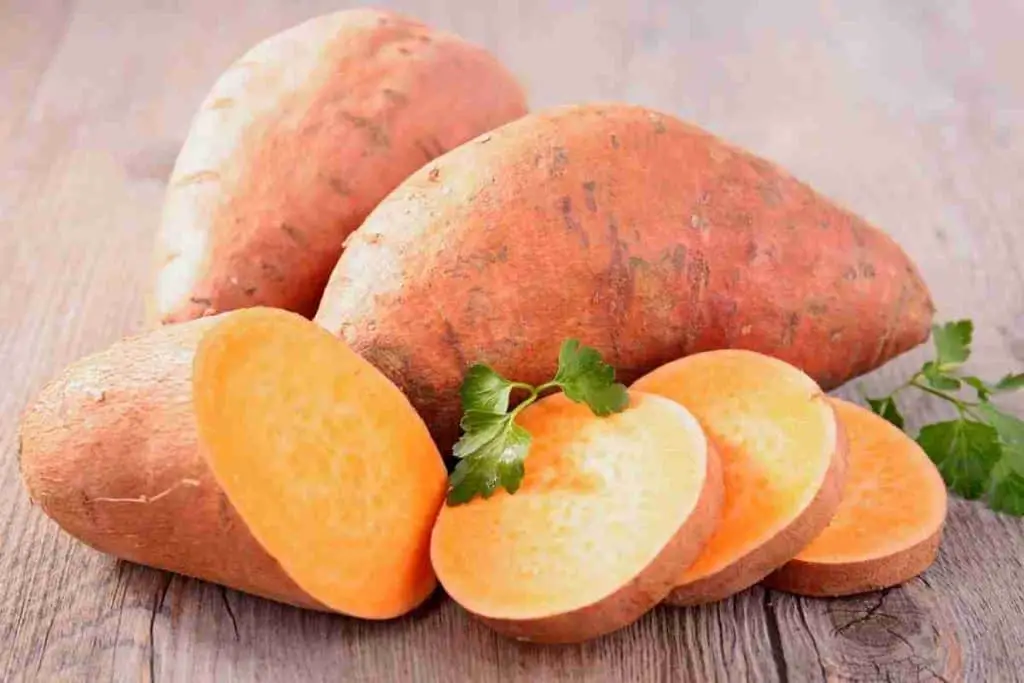
Potato Vs. Sweet Potato: What’s the Difference
Potatoes and sweet potatoes are tuberous root vegetables, but they differ in appearance, taste, and nutrients. These belong to separate plant families and have different sugar content and nutrient levels. Take a look at the following table to learn the significant differences between potatoes and sweet potatoes.
| Potato | Sweet Potato |
| Root vegetable | Root vegetable |
| Brown, yellow, red skin with yellow flesh | Brown skin & orange flesh |
| 92 Calories | 90 calories |
| 2.1g Fiber | 3.3g Fiber |
| Vitamin (A, B6, C) | Vitamin( A, B6, C) |
| Potassium 17% DV | Potassium 10% DV |
| Glycoalkaloids which are anticancer | Contain antioxidants heels damages |
| GI 89 | GI 44-94 |
Are Sweet Potatoes a Vegetable or Fruit?
Sweet potato is a tuber that grows underground, and it’s a vegetable, after all. Vegetable derives from a root word (Vegetate) that means both animate and inactive creatures with a fascination for words to engross them. Despite sweet potatoes having a tuberous root, they are also considered vegetables by experts because they are too starchy.
Is a Sweet Potato a Vegetable or Starch?
The sweet potato is a root vegetable that contains a lot of starch and other nutrients. Usually, starchy vegetables are high in calories than non-starchy vegetables with higher water levels and lower calories like cucumber, peppers, and lettuce.
To know more details about sweet potatoes, how much they have starch content, and other nutrients, let’s look at the table below.
| Nutrient | Amount |
| Fat | 0.1 g |
| Calories | 86% |
| Starch | 53% carbs content |
| Protein | 1.6 g |
| Water | 77% |
| Carbs | 20.1 g |
| Sugar | 4.2 g |
| Fiber | 3 g |
What is Starch?
Starch is a carbohydrate that is naturally abundant and found in seeds, tubers, stems, roots, stem pith, and fruits. It is commonly prepared as a white, tasteless powder, which has an amorphous shape and is used in pastes, powders, and ointments.
Furthermore, starch is solid at room temperature and cannot dissolve in cold water. Most plants, including potatoes, rice, and wheat, store their energy in the form of starch due to the long chains of sugar molecules connected. Starch is a polysaccharide carbohydrate chemically and has many sugar molecules linked together, just as opposed to the monosaccharide.
Are Sweet Potatoes Good Starch?
Having 53% starch in sweet potatoes is quite good as a source of energy and is regarded as good starch. However, the way of intake makes this starch harmful to our health. For instance, if you take sweet potatoes in fried form, you will increase your energy level and boost your calories, which may be detrimental to your health.
Is a Sweet Potato a Vegetable or a Carb?
Sweet potatoes are vegetables high in carbs; a medium-sized sweet potato has 27 grams of carbs. However, the main component of sweet potatoes is starch, up to 53% of it. The GI Index for sweet potatoes is 44-96, indicating how rapidly your blood sugar rises after eating them.
What is a Carb?
Carbs or carbohydrates are sugar molecules that are the primary source of energy for our body and one of the three essential macronutrients required in our diet. Besides fueling your brain, carbohydrates also help to regulate your digestive system, cholesterol level, and many other things. You can obtain carbohydrates from both natural and artificial food sources in rice, wheat, bread, pasta, etc.
Are Sweet Potatoes Good Carb?
Sweet potatoes are considered good carbs for your health because they belong to the healthy diet category. One medium-sized sweet potato contains 27 g of carbohydrates which is quite good for your health. Even so, sweet potatoes come in high-carb food, which means you should avoid them if you are eating low-carb.
Final Thought
Potatoes are vegetables with high nutritional values, but taking them daily can increase weight and sugar levels because of their high starch and carbohydrate content. However, some potatoes are suitable for a green salad, such as petit potatoes. If you want to instantly increase your blood sugar levels, sweet potatoes are a good option because of their high glycemic index.
If you are interested in the best kitchen products and accessories, be sure to visit my Recommended Products Page (click to see my page), Which includes all of my top picks by category.

